Vinegar and Baking Soda Uses: Ever feel like you’re drowning in a sea of harsh chemicals when trying to clean your home or garden? I know I have! But what if I told you that two humble ingredients, probably already sitting in your pantry, could revolutionize your approach to home and garden care? We’re talking about the dynamic duo: vinegar and baking soda!
These aren’t just for baking anymore. In fact, the use of vinegar as a cleaning agent dates back centuries, with evidence suggesting ancient civilizations utilized its acidic properties for various household tasks. Baking soda, too, has a rich history, evolving from a simple leavening agent to a versatile cleaning and deodorizing powerhouse.
But why should you, a modern-day homeowner or gardening enthusiast, care about these age-old remedies? Because in today’s world, we’re all looking for ways to simplify our lives, reduce our reliance on potentially harmful chemicals, and save a little money. And that’s exactly what mastering vinegar and baking soda uses can do for you. From tackling stubborn weeds to creating all-natural cleaning solutions, these two ingredients offer a safe, effective, and budget-friendly alternative to many commercial products. So, let’s dive in and unlock the incredible potential of these everyday essentials!
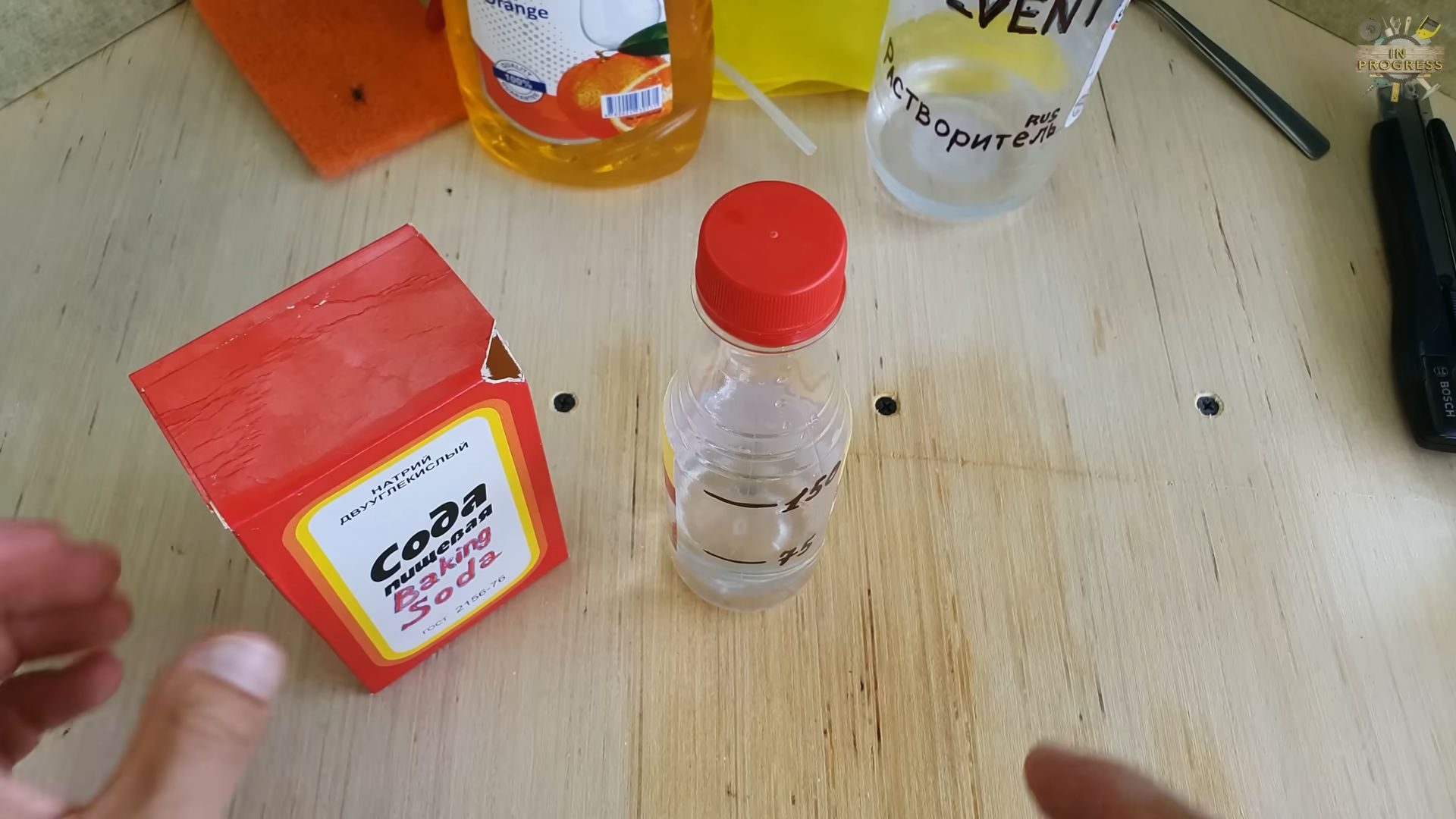
Unleash the Cleaning Powerhouse: Vinegar and Baking Soda DIY Hacks
Okay, friends, let’s talk about two ingredients that are probably already hanging out in your pantry: vinegar and baking soda. These aren’t just for cooking; they’re a dynamic duo when it comes to cleaning and tackling all sorts of household problems. I’m going to walk you through some of my favorite DIY hacks using these amazing ingredients. Get ready to be amazed by their versatility!
Unclogging Drains Like a Pro
Clogged drains are the bane of my existence, but thankfully, vinegar and baking soda are my go-to solution. Forget those harsh chemical drain cleaners! This method is safer, cheaper, and just as effective.
What you’ll need:
* 1 cup baking soda
* 2 cups white vinegar
* Boiling water
Step-by-step instructions:
1. Pour the Baking Soda: Start by pouring about 1 cup of baking soda down the clogged drain. Try to get as much of it down the drain as possible.
2. Add the Vinegar: Next, slowly pour 2 cups of white vinegar down the drain on top of the baking soda. You’ll notice some fizzing – that’s the magic happening!
3. Let it Fizz: Let the baking soda and vinegar mixture fizz and react for about 30 minutes. This is crucial because the chemical reaction helps to break down the gunk and grime causing the clog.
4. Flush with Boiling Water: After 30 minutes, carefully pour a pot of boiling water down the drain. The hot water helps to flush away the loosened debris.
5. Repeat if Necessary: If the drain is still slow, repeat the process one more time. Sometimes, a particularly stubborn clog needs a second dose of the baking soda and vinegar treatment.
Freshening Up Your Mattress
Did you know you can freshen up your mattress with baking soda? It’s a simple way to eliminate odors and absorb moisture, leaving your mattress feeling clean and revitalized.
What you’ll need:
* Baking soda
* Vacuum cleaner with upholstery attachment
* Essential oil (optional)
* Sifter or strainer (optional)
Step-by-step instructions:
1. Strip the Bed: Remove all bedding, including sheets, blankets, and mattress protectors.
2. Sprinkle Baking Soda: Generously sprinkle baking soda over the entire surface of your mattress. If you want to add a pleasant scent, mix a few drops of your favorite essential oil (like lavender or eucalyptus) with the baking soda before sprinkling. A sifter or strainer can help distribute the baking soda evenly.
3. Let it Sit: Allow the baking soda to sit on the mattress for at least 30 minutes, but ideally for several hours. The longer it sits, the more odors and moisture it will absorb. I usually leave it on for 4-6 hours, or even overnight if possible.
4. Vacuum Thoroughly: Use the upholstery attachment of your vacuum cleaner to thoroughly vacuum the entire surface of the mattress. Make sure to get into all the crevices and seams.
5. Flip and Repeat: Flip the mattress over and repeat the process on the other side. This ensures that both sides of the mattress are freshened up.
6. Put the Bedding Back On: Once you’ve vacuumed both sides of the mattress, you can put your clean bedding back on. Enjoy your freshly cleaned mattress!
Cleaning Grout Like a Pro
Grout can get grimy and discolored over time, but vinegar and baking soda can work wonders to restore its original sparkle.
What you’ll need:
* Baking soda
* White vinegar
* Old toothbrush or grout brush
* Spray bottle
* Water
Step-by-step instructions:
1. Make a Paste: Mix baking soda and water to form a thick paste.
2. Apply the Paste: Apply the baking soda paste to the grout lines.
3. Spray with Vinegar: Fill a spray bottle with white vinegar and spray it onto the baking soda paste. The mixture will fizz.
4. Scrub the Grout: Use an old toothbrush or grout brush to scrub the grout lines. The fizzing action helps to loosen the dirt and grime.
5. Rinse with Water: Rinse the grout with clean water. You can use a damp sponge or cloth to wipe away any remaining residue.
6. Dry the Area: Dry the area with a clean towel.
Making a Powerful All-Purpose Cleaner
Skip the store-bought cleaners and make your own all-purpose cleaner with vinegar. It’s effective, eco-friendly, and budget-friendly!
What you’ll need:
* 1 part white vinegar
* 1 part water
* Spray bottle
* Essential oils (optional, for scent)
Step-by-step instructions:
1. Combine Vinegar and Water: In a spray bottle, mix equal parts white vinegar and water.
2. Add Essential Oils (Optional): If you want to add a pleasant scent, add a few drops of your favorite essential oils to the mixture. Lemon, lavender, and tea tree oil are all great options.
3. Shake Well: Shake the spray bottle well to combine the ingredients.
4. Spray and Wipe: Spray the cleaner onto surfaces and wipe clean with a cloth or sponge.
Important Note: Avoid using vinegar on natural stone surfaces like marble or granite, as it can damage them.
Cleaning Your Microwave with Ease
Cleaning a microwave can be a messy chore, but this vinegar trick makes it a breeze.
What you’ll need:
* 1 cup water
* 1/4 cup white vinegar
* Microwave-safe bowl
Step-by-step instructions:
1. Combine Water and Vinegar: In a microwave-safe bowl, combine 1 cup of water and 1/4 cup of white vinegar.
2. Microwave the Mixture: Microwave the mixture on high for 5-10 minutes, or until the solution is boiling and the microwave is filled with steam.
3. Let it Sit: Leave the microwave door closed for another 5-10 minutes to allow the steam to loosen the grime and splatters.
4. Wipe Clean: Carefully remove the bowl from the microwave (it will be hot!). Use a cloth or sponge to wipe down the inside of the microwave. The grime should wipe away easily.
Reviving Dull Laundry
Vinegar can do wonders for your laundry! It can brighten whites, soften fabrics, and remove odors.
What you’ll need:
* White vinegar
Step-by-step instructions:
1. Brighten Whites: Add 1 cup of white vinegar to the washing machine along with your regular detergent when washing white clothes. The vinegar helps to brighten whites and remove dinginess.
2. Soften Fabrics: Add 1/2 cup of white vinegar to the fabric softener dispenser. Vinegar acts as a natural fabric softener, leaving your clothes feeling soft and fluffy.
3. Remove Odors: Add 1 cup of white vinegar to the washing machine to remove stubborn odors from clothes, such as sweat or mildew.
Cleaning Coffee Makers
Over time, coffee makers can accumulate mineral deposits that affect the taste of your coffee. Vinegar can help to remove these deposits and keep your coffee maker running smoothly.
What you’ll need:
* White vinegar
* Water
Step-by-step instructions:
1. Fill the Reservoir: Fill the coffee maker reservoir with equal parts white vinegar and water.
2. Brew Halfway: Start the brewing cycle and let it brew halfway through.
3. Let it Sit: Turn off the coffee maker and let the vinegar solution sit in the reservoir for 30-60 minutes. This allows the vinegar to dissolve the mineral deposits.
4. Finish Brewing: Finish the brewing cycle.
5. Rinse with Water: Rinse the coffee maker by running several cycles with fresh water until the vinegar smell is gone.
Polishing Chrome Fixtures
Vinegar can also be used to polish chrome fixtures, leaving them shiny and sparkling.
What you’ll need:
* White vinegar
* Soft cloth
Step-by-step instructions:
1. Dampen the Cloth: Dampen a soft cloth with white vinegar.
2. Wipe the Fixtures: Wipe the chrome fixtures with the vinegar-dampened cloth.
3. Rinse with Water: Rinse the fixtures with clean water.
4. Dry with a Clean Cloth: Dry the fixtures with a clean, dry cloth.
Removing Stickers and Labels
Struggling to remove a stubborn sticker or label? Vinegar to the rescue!
What you’
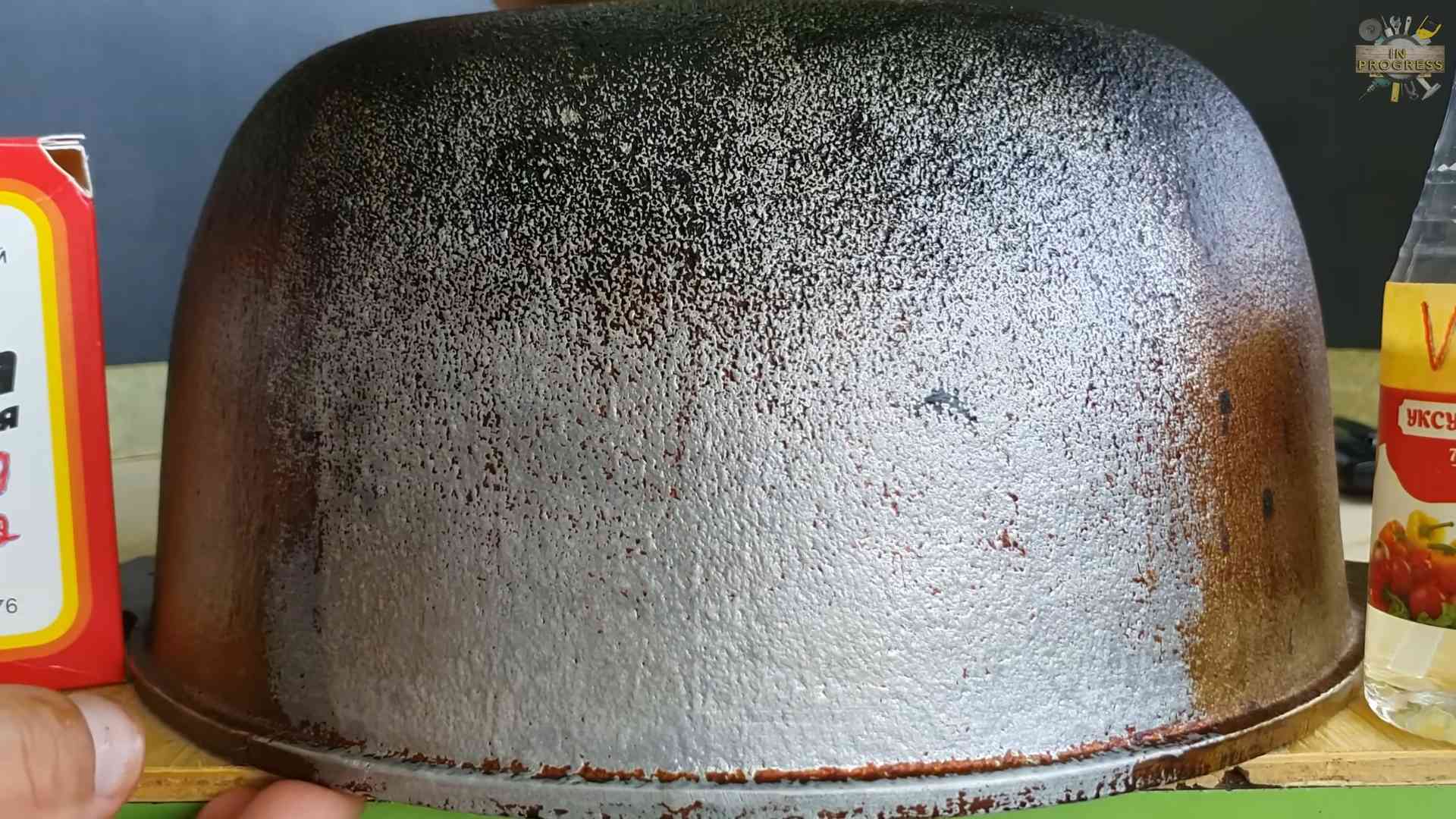
Conclusion
So, there you have it! Unlocking the power of vinegar and baking soda is more than just a fun science experiment; it’s a game-changer for your home and well-being. From tackling stubborn stains to creating natural cleaning solutions, this dynamic duo offers a safe, effective, and budget-friendly alternative to harsh chemicals. The versatility of this combination is truly remarkable, making it an indispensable tool in any household.
Why is this DIY trick a must-try? Because it’s simple, safe, and incredibly effective. You’re not just cleaning; you’re embracing a more sustainable and healthier lifestyle. You’re reducing your reliance on potentially harmful chemicals and saving money in the process. Plus, the satisfaction of creating your own cleaning solutions and seeing them work wonders is incredibly rewarding.
But the possibilities don’t stop there! Feel free to experiment with different ratios of vinegar and baking soda to find what works best for your specific needs. For instance, adding a few drops of essential oils like lavender or lemon can infuse your cleaning solutions with a pleasant fragrance. You can also create a paste of baking soda and water for a gentler abrasive cleaner on delicate surfaces. For tougher stains, pre-treating with vinegar before applying the baking soda can enhance its cleaning power. Consider using infused vinegar (vinegar steeped with citrus peels or herbs) for added cleaning and aromatic benefits. Remember to always test any solution on an inconspicuous area first to ensure it doesn’t damage the surface.
We’ve covered a wide range of applications, from unclogging drains to deodorizing carpets, but the potential uses for this powerful combination are virtually endless. The key is to understand the basic principles of how vinegar and baking soda work together – the acidic nature of vinegar reacting with the alkaline nature of baking soda to create a fizzing action that loosens dirt and grime – and then apply that knowledge to your specific cleaning challenges.
Don’t just take our word for it, though. We wholeheartedly encourage you to try these DIY tricks for yourself. Start with a simple task, like cleaning your microwave or freshening up your garbage disposal. Once you see the amazing results, you’ll be hooked!
We are confident that incorporating this vinegar and baking soda uses into your cleaning routine will revolutionize the way you approach household chores. It’s a simple, effective, and eco-friendly solution that will leave your home sparkling clean and smelling fresh.
We’re eager to hear about your experiences! Share your tips, tricks, and success stories in the comments below. Let’s build a community of DIY enthusiasts who are passionate about creating a cleaner, healthier, and more sustainable world, one vinegar and baking soda concoction at a time. What creative ways have you found to use this dynamic duo? Let us know!
Frequently Asked Questions (FAQ)
What exactly happens when you mix vinegar and baking soda?
When vinegar (an acid) and baking soda (a base) are mixed, they react to create carbon dioxide gas, water, and sodium acetate. The fizzing action you see is the carbon dioxide being released. This reaction is what helps to loosen dirt, grime, and debris, making it easier to clean surfaces and unclog drains. The sodium acetate left behind is a mild salt that is generally harmless.
Is it safe to mix vinegar and baking soda in a closed container?
No, it is absolutely not safe to mix vinegar and baking soda in a closed container. The reaction produces carbon dioxide gas, which can build up pressure and cause the container to explode. Always mix these ingredients in an open container with adequate ventilation.
Can I use any type of vinegar for cleaning?
While white vinegar is the most commonly used type for cleaning due to its acidity and lack of color, you can also use apple cider vinegar. However, be aware that apple cider vinegar has a slight color and odor that might affect certain surfaces. Avoid using balsamic or red wine vinegar, as they can stain. Cleaning vinegar, which has a higher acidity level than regular white vinegar, is also an option for tougher cleaning tasks.
What surfaces should I avoid cleaning with vinegar and baking soda?
Avoid using vinegar and baking soda on delicate surfaces such as marble, granite, and other natural stones, as the acidity of the vinegar can etch and damage them. Also, avoid using it on waxed wood furniture, as it can strip the wax. Be cautious when using it on aluminum, as it can cause discoloration. Always test the solution on an inconspicuous area first to ensure it doesn’t cause any damage.
How do I unclog a drain with vinegar and baking soda?
Pour about one cup of baking soda down the drain, followed by one cup of vinegar. Let it fizz for about 30 minutes, then flush with hot water. For stubborn clogs, you can repeat the process or let the mixture sit overnight before flushing.
Can I use vinegar and baking soda to clean my oven?
Yes, you can use vinegar and baking soda to clean your oven. Make a paste of baking soda and water and spread it all over the inside of your oven, avoiding the heating elements. Let it sit overnight. The next day, spray the baking soda paste with vinegar and wipe away the loosened grime.
How can I deodorize my carpet with vinegar and baking soda?
Sprinkle baking soda liberally over your carpet and let it sit for at least 30 minutes, or even overnight. Then, vacuum it up thoroughly. For extra deodorizing power, you can mix a few drops of essential oil with the baking soda before sprinkling it on the carpet. For stain removal, you can try a solution of equal parts vinegar and water, but always test it on a hidden area first.
Is there a difference between baking soda and baking powder? Can I substitute one for the other?
Yes, there is a significant difference between baking soda and baking powder, and they are not interchangeable for cleaning purposes. Baking soda (sodium bicarbonate) is a pure alkaline compound that requires an acid to activate its cleaning power. Baking powder, on the other hand, contains baking soda plus an acidifying agent, so it doesn’t need vinegar to create the fizzing reaction. For cleaning, baking soda is the preferred choice when combined with vinegar.
How long does a vinegar and baking soda solution last?
The cleaning power of a vinegar and baking soda solution is most effective immediately after mixing, as the fizzing action is strongest then. While the resulting solution of water and sodium acetate is still safe to use, it won’t have the same cleaning power after the initial reaction subsides. It’s best to mix only what you need for immediate use.
Can I use vinegar and baking soda to clean my coffee maker?
Yes, you can use vinegar to clean your coffee maker. Fill the water reservoir with equal parts white vinegar and water. Run the coffee maker through a full brewing cycle. Then, run it through two more cycles with just plain water to rinse away any remaining vinegar. Baking soda can be used to clean the coffee pot itself by scrubbing it with a paste of baking soda and water.
Are there any safety precautions I should take when using vinegar and baking soda?
While vinegar and baking soda are generally safe, it’s always a good idea to wear gloves when cleaning, especially if you have sensitive skin. Avoid getting the mixture in your eyes, and if you do, rinse thoroughly with water. Ensure adequate ventilation when using vinegar and baking soda, especially in enclosed spaces. And as mentioned before, never mix vinegar and baking soda in a closed container.

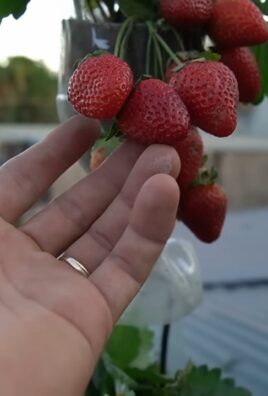
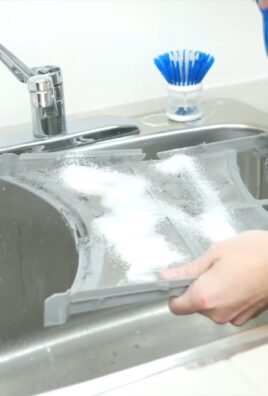
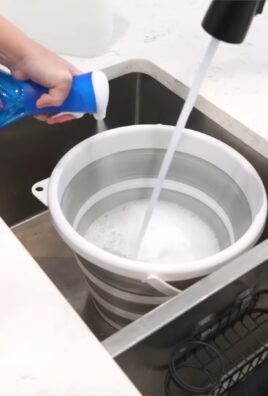
Leave a Comment